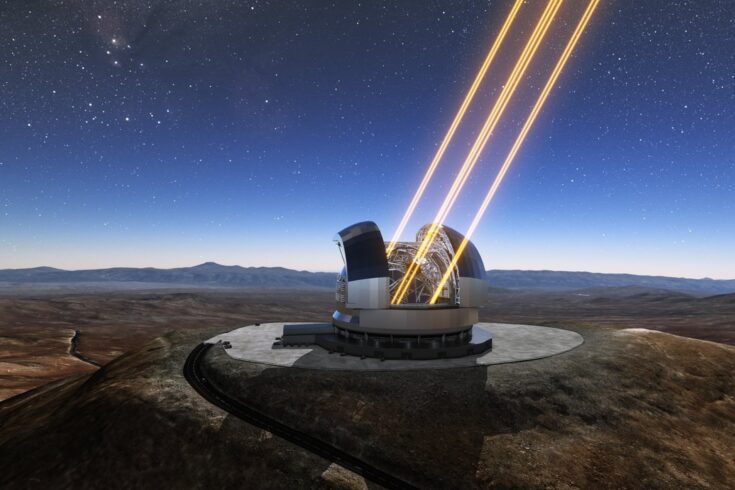The ELT is currently under construction in the middle of the Chilean Atacama Desert and, at approximately the size of the Roman Colosseum, is set to be the largest optical telescope ever built.
It is owned by the European Southern Observatory (ESO) who announced this week that construction of the first scientific instrument for the telescope will begin at various sites, including the Science and Technology Facilities Council (STFC) UK ATC.
Unexplored corners of the Universe
The ELT is one of the most ambitious scientific undertakings in history and will probe the furthest reaches of the cosmos in a bid to answer questions such as:
- what Earth-like planets exist around other stars?
- is there evidence of life outside our solar system?
- how did the earliest galaxies form and evolve?
It will comprise of several scientific instruments, which are technological devices that record different signals from space to capture a detailed picture of the Universe.
The Mid-infrared ELT Imager and Spectrograph (METIS) is the first ELT instrument to pass its final design review and so will be the first to be manufactured ahead of scientific operations beginning sometime in 2028.
Looking from every angle
METIS is a key component of ELT and will focus on the study of planet-forming discs of gas and dust that could hold critical information on galaxy formation and evolution.
METIS will be capable of recording light signals from space in the mid-infrared spectrum, and in doing so offers a number of advantages to ELT astronomers.
For example, visible light emitted from planet-forming discs is typically absorbed by dust particles, and so observing in mid-infrared is the only way to fully study these.
Additionally, colder objects like planets mostly radiate light in the mid-infrared, and so METIS will be well placed to contribute to the search for habitable worlds.
Changing our understanding
Professor Gillian Wright, Director at the STFC UK ATC, said:
I am extremely proud of the role that UK ATC plays in working with the European Southern Observatory and endeavours like the ELT construction.
We are living in a golden age for astronomy that is the result of widespread collaboration across borders and the technological leaps that this enables.
The METIS instrument will be invaluable to ensure that the ELT can look more precisely than ever before at mid-infrared light, in a bid to change our understanding of our place in the Universe.
UK expertise in international research
METIS is designed and will be manufactured by the international METIS Consortium which is made up of more than 10 world-leading astronomical research institutes.
With its role in the METIS consortium, UK ATC is building on its technical leadership of the Mid-Infrared Instrument (MIRI) for the James Webb Space Telescope by providing METIS’ infrared spectrometer.
This will exceed MIRI’s spectral resolution by a factor of 30 and its spatial resolution by a factor of six, opening new vistas in the study of star and planet formation.
ESO is itself an international consortium that brings together 16 member states to design, build and operate the most advanced ground-based observatories in the world, and to foster international collaboration for astronomy.
The UK, via STFC, is the second largest funding contributor of ESO and provides a range of expertise and services through institutions such as UK ATC to support its scientific operations.
Further information
Learn more about METIS and its people, engineering and science on the European Southern Observatory website.
Read the full list of METIS Consortium members on the ESO website.

